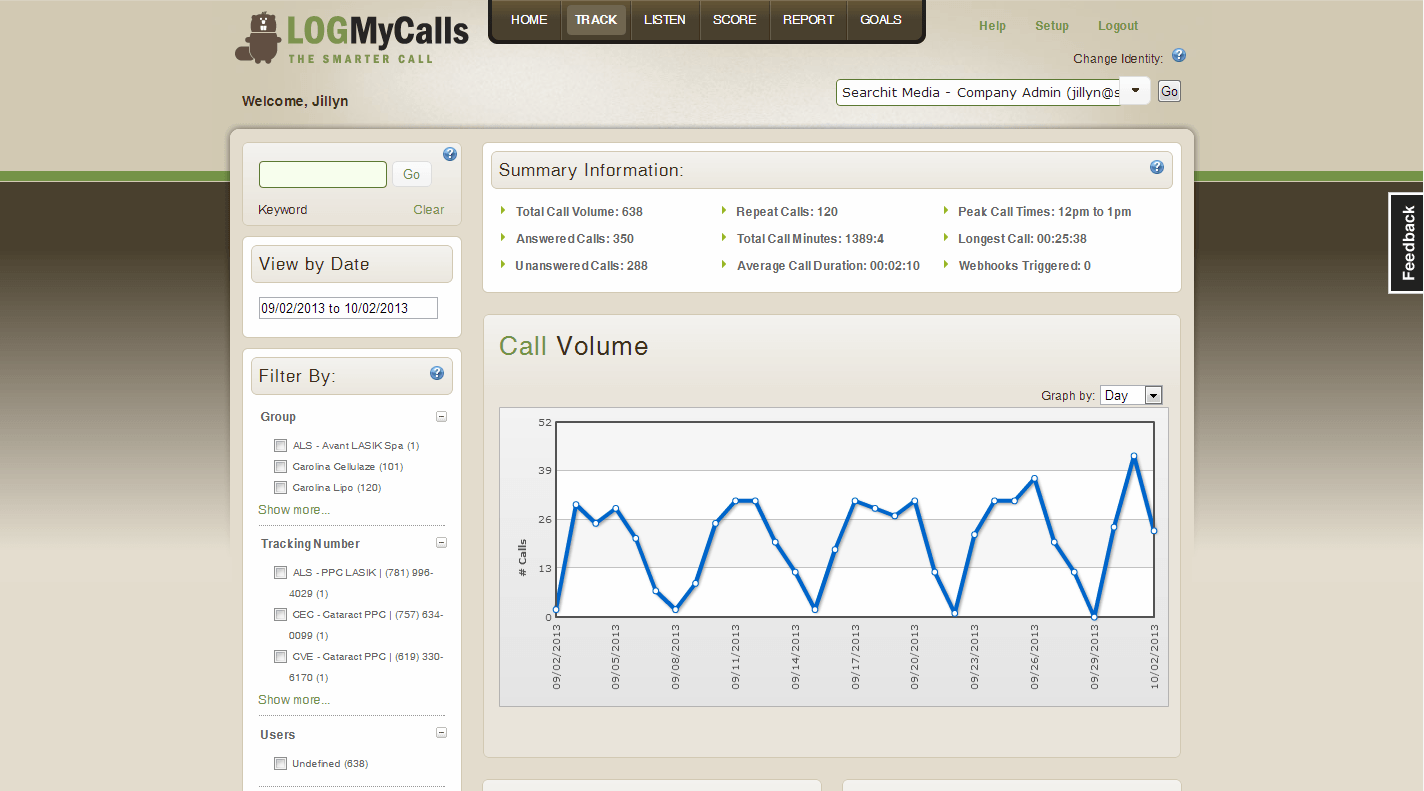Call tracking is a nearly $1B industry. Call tracking is used primarily by online marketers to track which ads, campaigns, and keywords are generating phone calls. Most users are advertisers, agencies, and publishers that want to know where to spend valuable marketing budget dollars. In short: they want to figure out which marketing dollars generate phone calls and which don’t.
Since call tracking is such an integral part of the SEM world, and since 2013 was such a watershed year in the call tracking industry, many marketers wonder what’s going to happen in 2014.
Prediction 1 – Google will, at some point, expand their call tracking offerings.
They already provide call tracking numbers for certain Pay Per Call ads and word is they’re looking to expand even more. This has been written about on SEJ and elsewhere.
So, what does this mean?
First, it probably means very little for marketers already using call tracking. Google will likely not expand into Dynamic Number Insertion (DNI), which most online marketers use to get call tracking data. It is likely that Google’s offerings will remain mobile-focused.
Second, if marketers only want raw numbers of phone calls, Google call tracking may work well for them. However, extensive case studies conducted by LogMyCalls and our partners indicate that Google call tracking isn’t…well…terribly accurate.
Google call tracking simply tracks–and bills you–when a phone number is tapped on a mobile phone and the call process begins. It does not track:
- how frequently the call actually reached the business, or
- whether or not the caller was actually a sales inquiry.
In short: Google’s data will display ‘calls’ that never actually arrived at your business. In our case studies almost 40% of the calls Google displayed via their call tracking were never even arrived at the business. The caller terminated them before the phone even rang. However, if someone were using Google call tracking, they would never have known that.
Prediction 2 – Advanced analytics solutions will grow in popularity.
Basic call tracking just doesn’t cut it anymore. Marketers are demanding more data from their phone calls. They’re demanding as much data from their call analytics dashboards as they receive from their web analytics tools. Imagine, for example, if a web analytics tool only provided raw visits and referring source? That would be a very substandard web analytics tool. And yet, that’s basically what regular call tracking provides.
Marketers are increasingly demanding more data. Thus, the several call tracking solutions that offer advanced analytics tools will grow in popularity in 2014. Those that don’t provide advanced analytics will be left behind.
Prediction 3 – Local search experts will completely accept call tracking.
This is a bold prediction. The long held belief that call tracking harms SEO is starting to dissipate. Local search experts are realizing, that when used correctly, call tracking does not harm SEO. And, fortunately, call tracking providers are educating their clients more effectively about the incorrect ways to use call tracking.
Call tracking can hurt SEO when it is used on directory listings of any kind. These uses of call tracking numbers confuse Google and harm NAP which will, in turn, eventually damage rankings. (Of course, no one knows how much rankings are harmed by a messed up NAP). And once the incorrect NAP is out of the proverbial barn, it is difficult to get back inside.
However, if call tracking is used correctly, via Dynamic Number Insertion on websites, it does not, in fact, CANNOT, hurt SEO. In this case, a unique phone number is simply displayed via a Javascript snippet when a visitors comes to the site via a specific source, campaign, or channel.
The hard-coded number never changes. NAP is not confused and all is right with the world. All local search experts, even those openly critical of call tracking providers, universally acknowledge this fact.
Call tracking does not hurt SEO if implemented correctly. In 2014 more local marketers will realize this. Our prediction is that this ‘concern’ will largely dissipate at 2015 dawns.
Prediction 4 – Marketers will demand more integrations with other SaaS platforms
In 2014 a call tracking provider that can’t send and receive data from other SaaS platforms will be rendered essentially useless. There are several that provide robust API and functionality and one or two that provide Webhooks. There are some that integrate with specific solutions. In 2014 this integration capability will rise in importance. Marketers will demand it.
Final prediction: 2014 is going to be a massive year for call tracking.
Featured Image Credit: Screenshot taken 12/15/2013 of www.LogMyCalls.com




